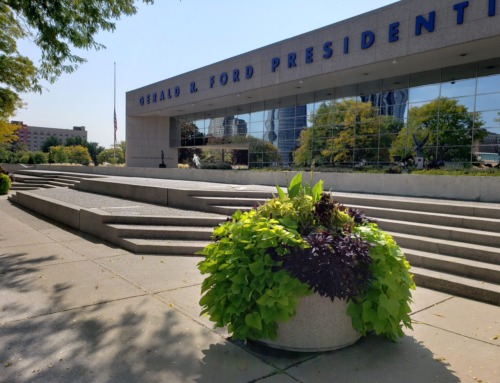The Spanish American War is likely the least-known war in American history, and it’s no surprise, considering the fact that it didn’t even last a year. Needless to say, it did happen, starting in April of 1898 and Michigan led the way in many aspects of the war.
In the 1890s, Cuba was under the rule of Spain, and as early as February of 1895, the world began learning that the Cubans were struggling for independence. Spain was using brutally repressive methods to stop all rebellions. Americans were outraged to learn that General Valeriano Weyler y Nicolau, Spain’s appointed governor of Cuba at the time, who came to be known as The Butcher, planned to move Cuban civilians to a central location to be under the control of the Spanish Army.
The Spanish methods of controlling the native Cubans were graphically written about in American newspapers, including reports that thousands of Cubans were starving and dying of disease. Many of these articles were considered yellow journalism by some, having relied on eye-catching headlines, exaggeration and sensationalism to increase newspaper sales. To the US public, Spain was a tyrannical colonial oppressionist and most Americans backed Cuban independence, even to the point of demanding US intervention.
The situation escalated on the night of February 15, 1898 when an American battleship exploded and sank in the Havana harbor. The USS Maine had been sent to Cuba to protect American citizens and property after anti-Spanish rioting. 266 US sailors were killed. The exact reasons as to why the ship sank are still unknown, but the Spanish were immediately blamed.
On March 20, 1898, a rally was held in Detroit, where Free Cuba flags lined the auditorium and many Michigan leaders, including Governor Hazen S. Pingree, gave impassioned speeches on helping the Cuban people. In fact, Pingree even proposed that the United States buy Cuba from Spain for $500 million.
On April 9, 1898, Spain announced an armistice that granted Cuba limited powers of self-government. The US Congress issued resolutions that declared Cuba’s right to total independence and demanded the withdrawal of Spain’s armed forces from the island. They also authorized the use of force by President William McKinley to secure the withdrawal of the Spanish. Though McKinley initially wanted to maintain friendly relations with Spain, he supported Congress’s decisions. America insisted that the US had no plans to annex Cuba, but Spain did not like the interference. They declared war on the United States on April 24, 1898 and the US declared war on Spain on April 25. The war declaration was later retroactively declared on April 21, and that is the date that is now regarded as the beginning of the Spanish-American War.
On April 23, McKinley called for 125,000 volunteers and Michigan stepped up in a major way. Governor Pingree ordered up the National Guard, but each individual was required to volunteer for the specific duty in fighting against the Spanish. Most of the Michigan men volunteered, and they were reorganized into new units. Each regiment would contain 1,000 men. On May 25, there was a second call for volunteers, and Michigan furnished another regiment of 1,200 men and an additional 200 men that would be sent to the original four regiments. The Michigan National Guard units were the first to volunteer and in all, 6,893 Michiganders served, some even coming from the Upper Peninsula.
On May 1, US Commodore George Dewey led a Naval squadron into Manila Bay in the Philippines, which was also held by Spain at that time. They destroyed the Spanish fleet that was anchored in the harbor. Ten American seamen were lost, but the Spanish losses were over 370 and Manila was occupied by the US troops by August.
The first four Michigan volunteer regiments mobilized near Detroit. Crowds of locals lined the street to send the soldiers off as they marched to the Union Depot for their departure to Camp Eaton at Island Lake near Brighton. Visitors were allowed in the camp, and many parents came to check on their sons. Many of them insisted that the soldiers get better accommodations, but it never came to be. Governor Pingree was also a regular visitor of the camp and he brought the soldiers better boots and uniforms. He was an avid supporter of the soldiers, as well as veterans. At camp, boxing matches and band concerts were held as entertainment for the soldiers.
Later in May, the 31st, 32nd, 33rd, and 34th Michigan infantry regiments were divided and boarded trains to different camps throughout the United States. They were not only going for training, but also to acclimate themselves to the hotter weather they would encounter in the Caribbean. They arrived in camps at Chickamauga Park, Georgia; Tampa, Florida; and Camp Alger near Washington DC. On their way south, civilians continued to greet the soldiers with cheers and marching bands.
The 32nd Michigan was moved to Fernandian, Florida, and trained there for some time. While on their way to Cuba, their transport collided with another ship in port. The regiment was unloaded and never left the United States.
The 33rd and 34th Michigan left Island Lake in May of 1898 for Falls Church, Virginia, then down to Florida and on to Cuba. They were a part of Major General Rufus Shafter’s (also known as Pecos Bill) 5th Army Corps. Shafter was a 63-year-old Galesburg, Michigan native and Civil War hero. He was also overweight and had gout. He struggled to ride on horseback and commanded his brigade from ships off the coast of Cuba. Shafter’s 5th corps also included the famed US Volunteer Cavalry led by a young Theodore Roosevelt.
On June 28, 1898, Michigan military men saw action. Michigan native, Commander William H. Emory and 200 Michigan Naval Militia sailors, served among the 285-man crew of the USS Yosemite, an auxiliary cruiser that was a part of the blockade at San Juan, Puerto Rico. They fought an hours-long battle with the Spanish SS Antonio Lopez, a ship that was trying to break through the American blockade. The Yosemite won the battle. Also a part of that battle were two future politicians. Edwin C. Denby who would later become Secretary of the Navy and a congressman, and Truman H. Newberry who would later become a Secretary of the Navy, as well as a US Senator.
On June 29, Brigadier General Henry M. Duffield, a Civil War veteran from a prominent Detroit family, led the 33rd and 34th Michigan volunteers into Cuba. They quickly learned that they not only had to worry about the Spanish soldiers, but also the crabs of Cuba. The crustaceans got into the soldiers’ hair, beards and pinched their noses. They began to march the next day, and hiked through the jungle, battling mud and hourly downpours, as well as Spanish sharpshooters. As they marched, they built up and widened the narrow and mud-slogged roads to make it easier to mobilize.
On July 1, 1898, the Michigan soldiers finally saw combat action. The 33rd was led to the bridge at Aguadores. Their main goal was to attract the attention of the Spanish. They wanted to draw Spanish defenders away from their nearby positions at San Juan Hill and El Caney, where the main battle of the entire war was fought later that day. Though the fight at Aguadores, which is sometimes considered a skirmish, resulted in a Spanish victory, the soldiers did enough to help Theodore Roosevelt and his Rough Riders charge up San Juan Hill and win the greatest victory of the war. Three men from the 33rd were killed in the fight.
The next day, the United States began a siege of Santiago, and on July 3, the Spanish fleet was destroyed off Santiago by U.S. warships under Admiral William Sampson. On July 17 the Spanish surrendered the city of Santiago and Cuba to the Americans. In Puerto Rico, Spanish forces crumbled in the face of U.S. forces, and on August 12 an armistice was signed between Spain and the United States, ending the fighting. 2,910 Americans died in the conflict and 2,565 of these soldiers died from disease, both in Cuba and the camps. That left 345 US soldiers who died in combat.
Overall, the war was very one-sided, as Spain didn’t have an adequate army or navy for a distant war, but the US troops were not always as well-equipped as they should have been. Many of the supplies and logistics issues were blamed on Russell Alger, a Michigan lumber baron and Secretary of War.
Toward the end of summer and into fall, US troops began heading home. On August 27, the 34th Michigan returned to Montauk Point and disbanded between September 3 and January 2. The 33rd Michigan reached Detroit on September 2, 1989, then disbanded between September 3 and January 6, 1899. Many of the soldiers, especially in Georgia and Ft. Alger suffered severely from disease. Measles and typhoid fever were the most prevalent. The 32nd remained in Florida, then transferred to Ft. McPherson, Georgia. It stayed there throughout the war until September. They returned to Michigan and were disbanded in the fall.
On January 25, 1899, the 31st Michigan, which had not been disbanded, was sent from Knoxville overseas. They performed guard duty in the Santa Clara province, protecting property and preserving order. They returned to the US on April 25 and disbanded at Savannah on May 17, 1899. Twenty men died from this regiment from sickness in camps and hospitals.
On March 31, 1899, the 35th Michigan disbanded at Augusta, Georgia. They did not serve overseas, but still lost 23 men to disease.
The town of Three Oaks in Michigan was given special commendation after the war, due to the fact that the civilians contributed the most per capita of any US community to the war effort. They were given a captured cannon for their efforts and President McKinley visited on the day it was dedicated.
The Treaty of Paris was signed on December 10, 1898. In the agreement, Spain renounced claims to Cuba, giving them independence, ceded Guam and Puerto Rico to the US and gave sovereignty over the Philippines to the US for $20 million.
Overall, Michigan regiments suffered 182 casualties due to sickness, two men were killed in action, one died later of his battle wounds and one more drowned.
The Spanish American War may not have lasted long, but is considered a turning point in US history. Because of this war, America emerged as a world power with many overseas acquisitions and a new interest in international policies that would lead to a determining role in European and world affairs.







Leave A Comment
You must be logged in to post a comment.